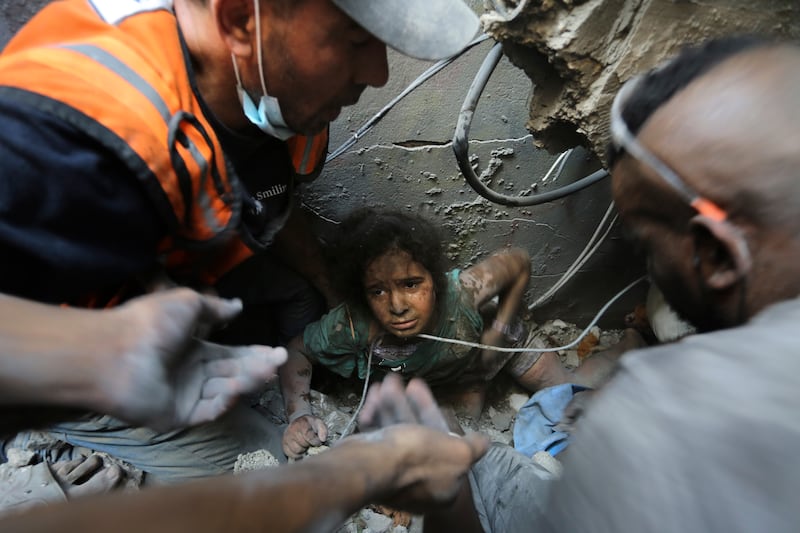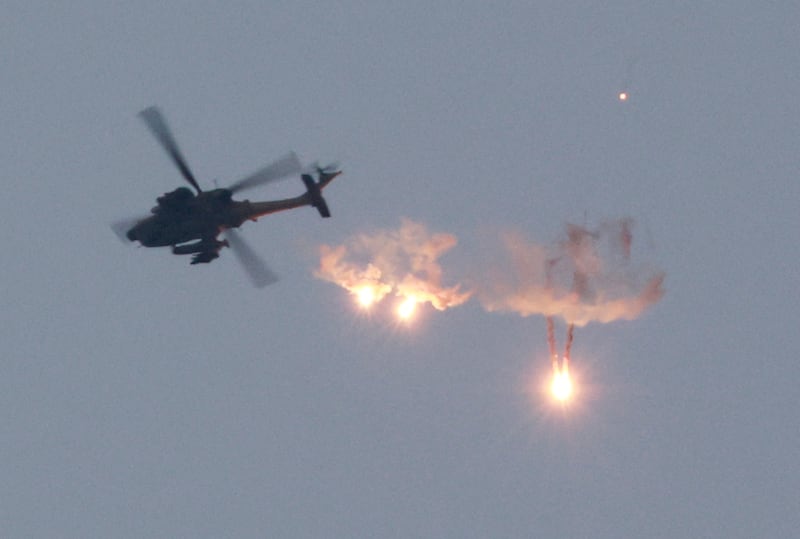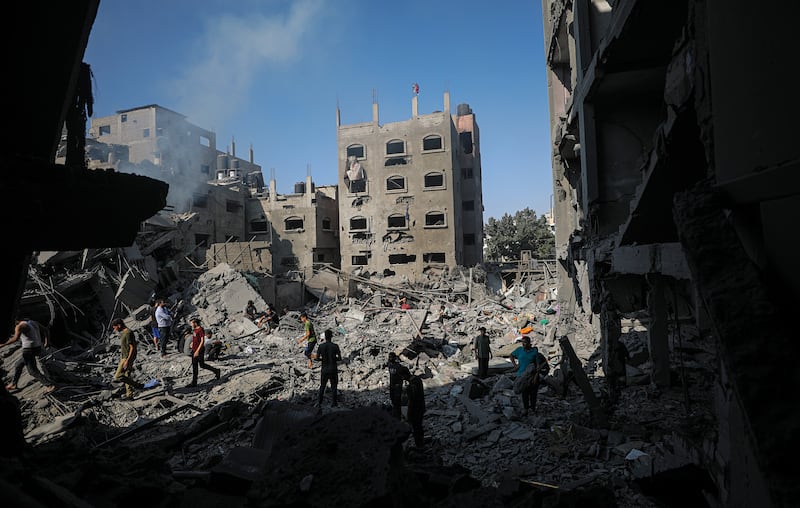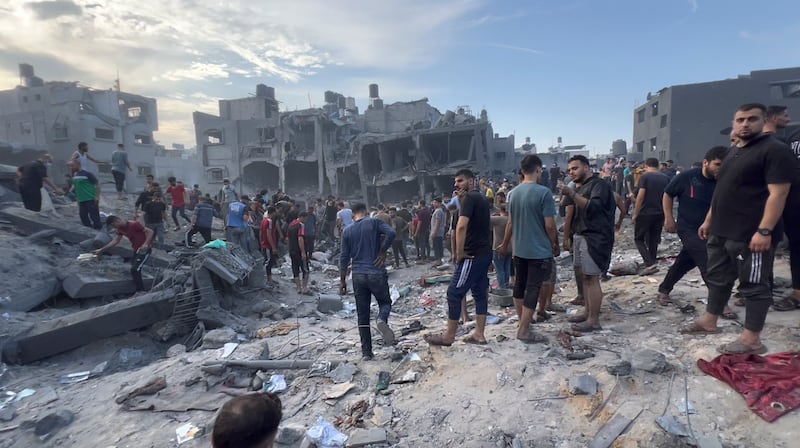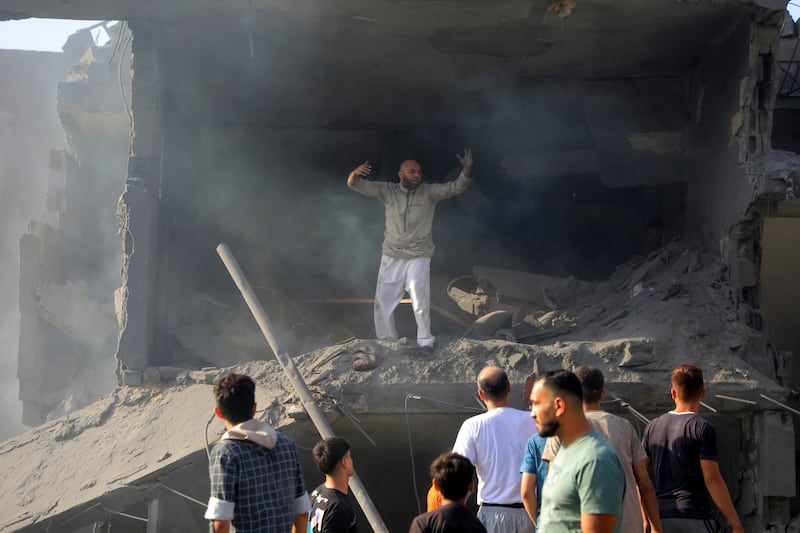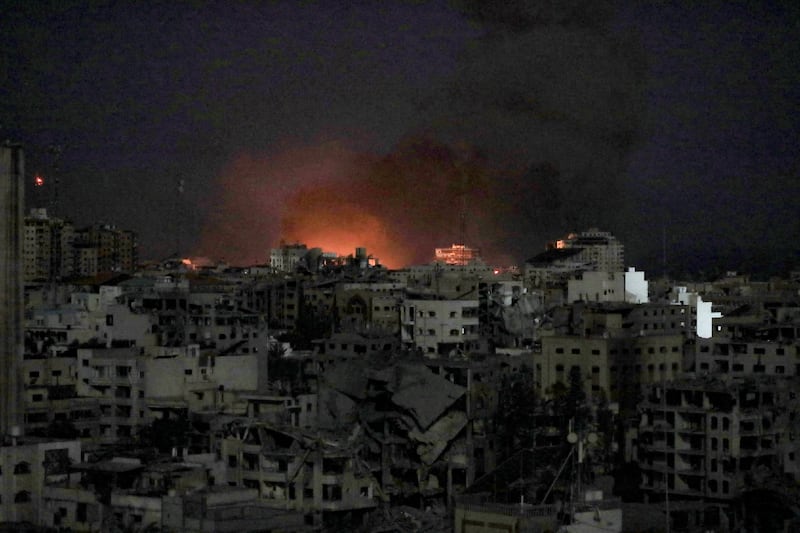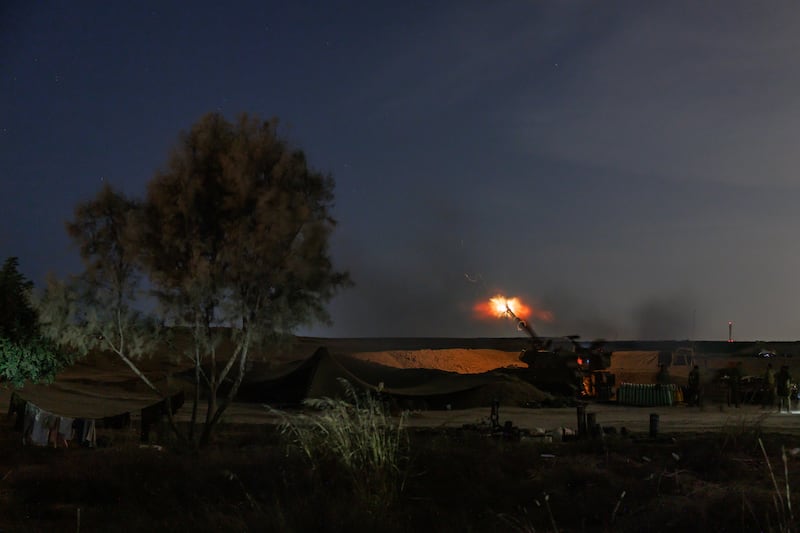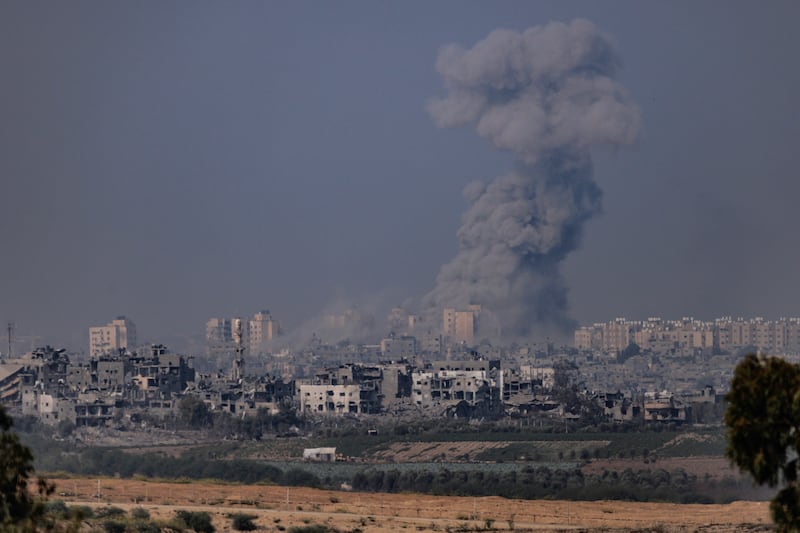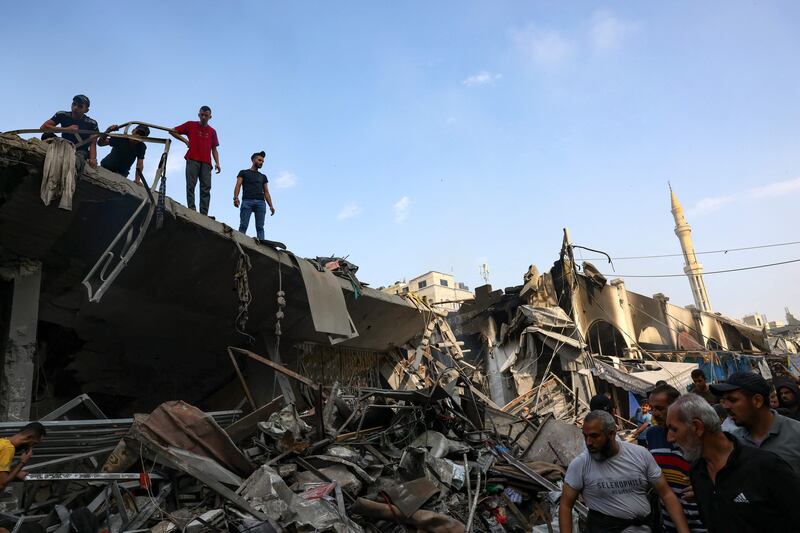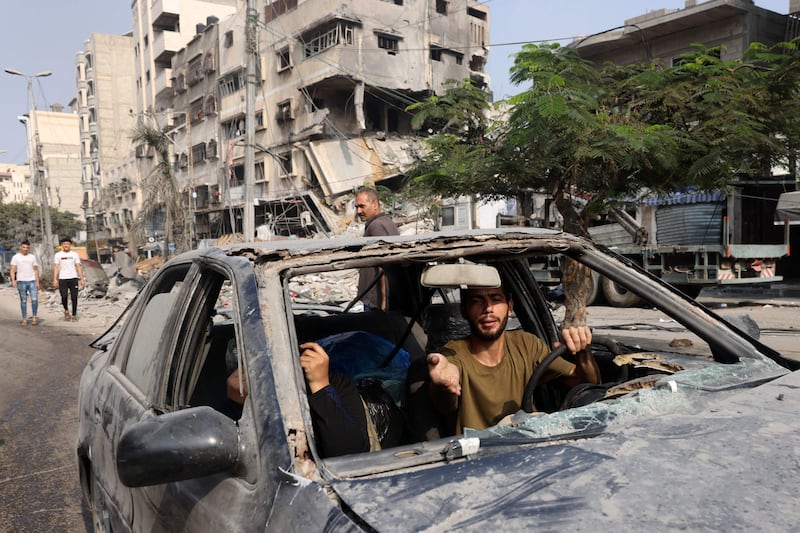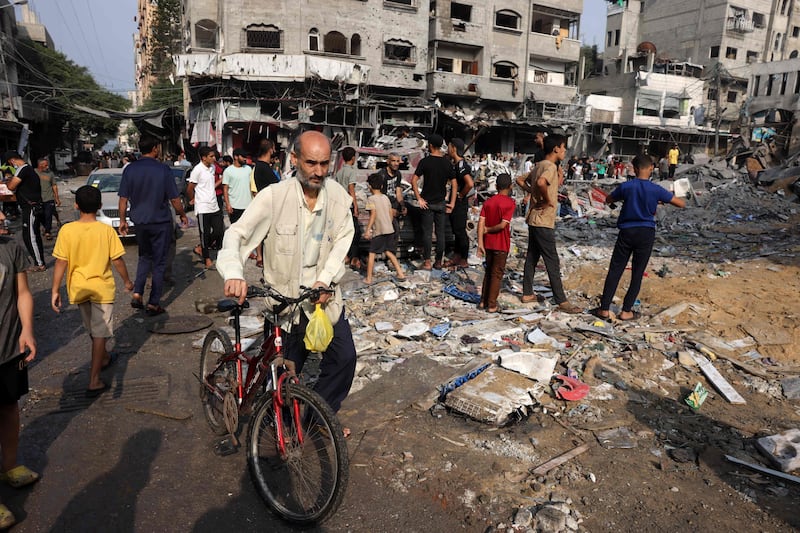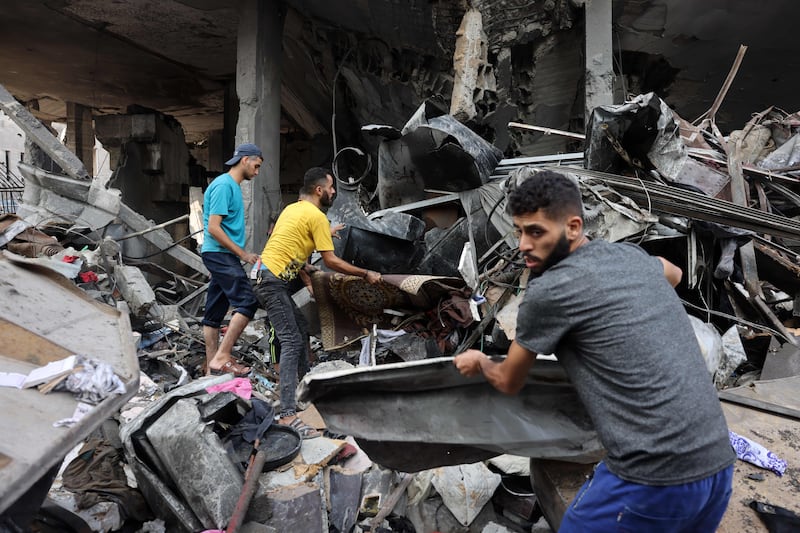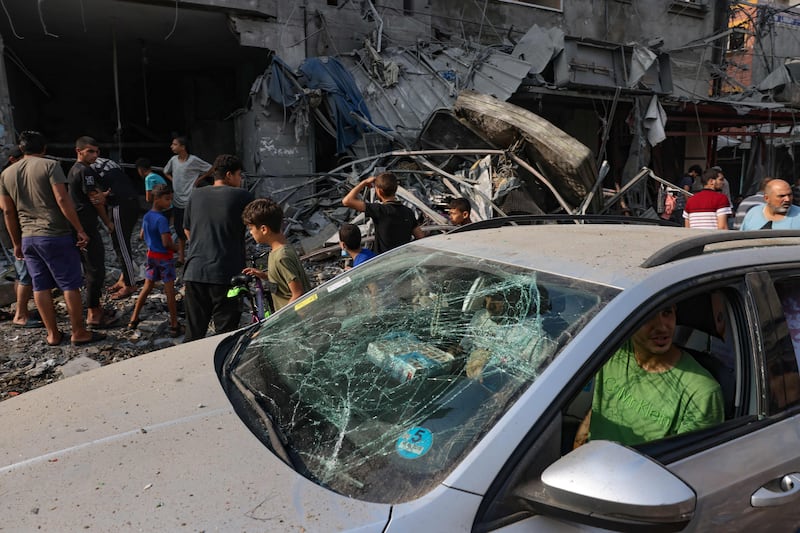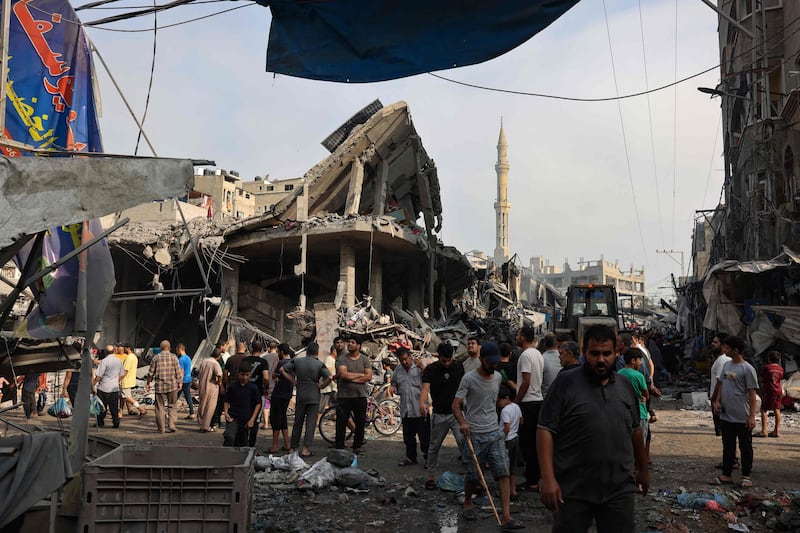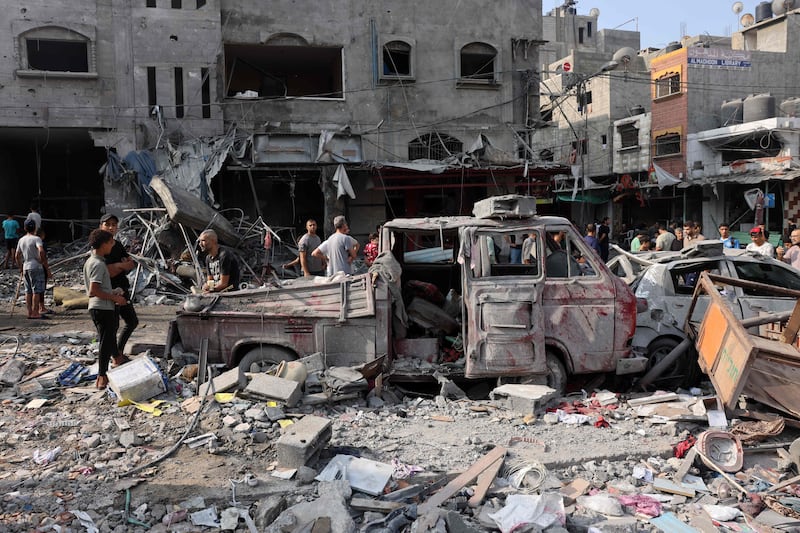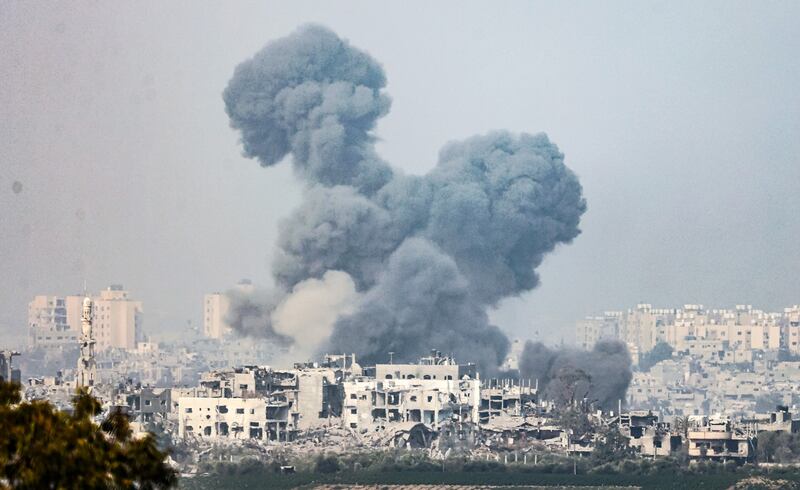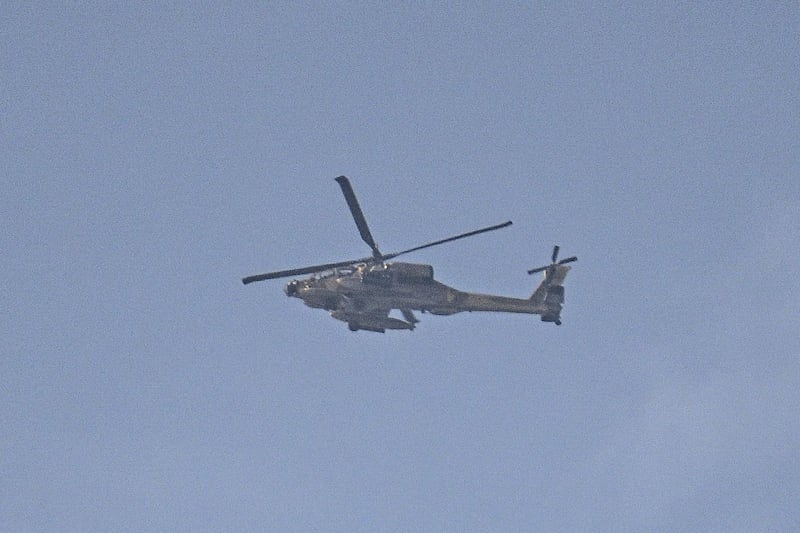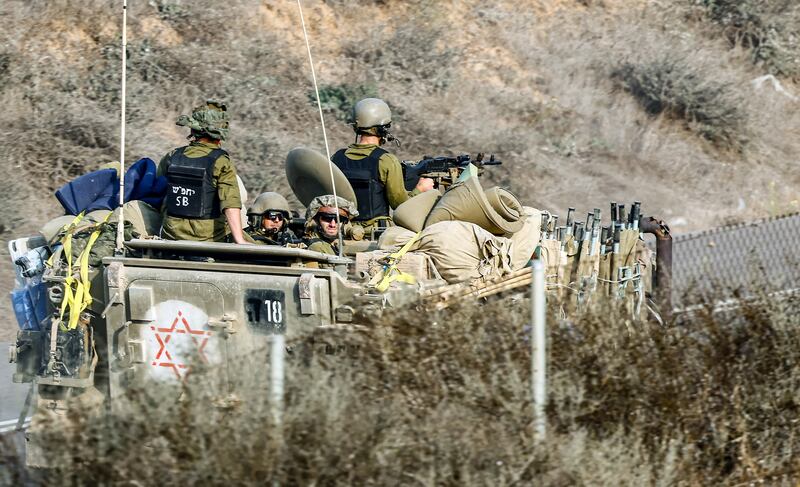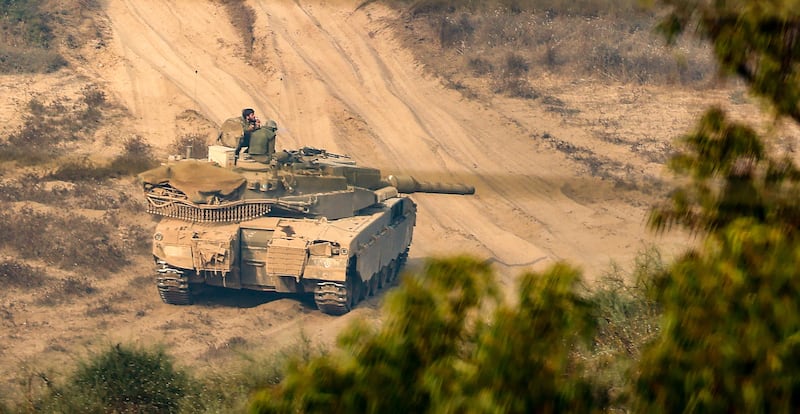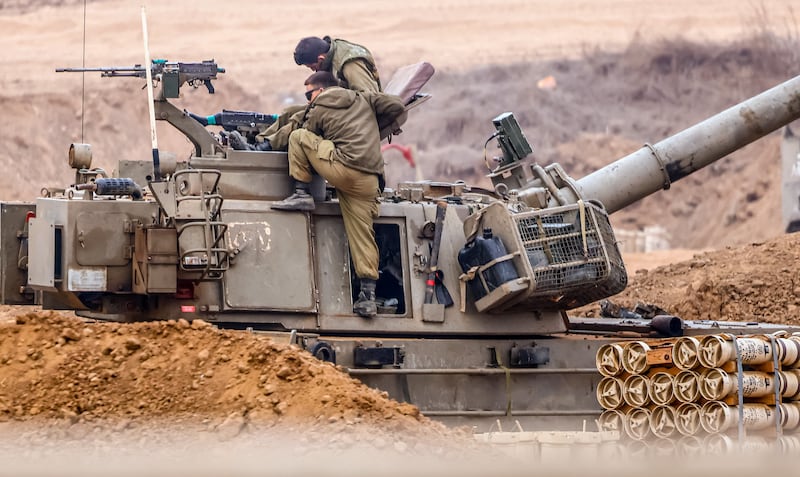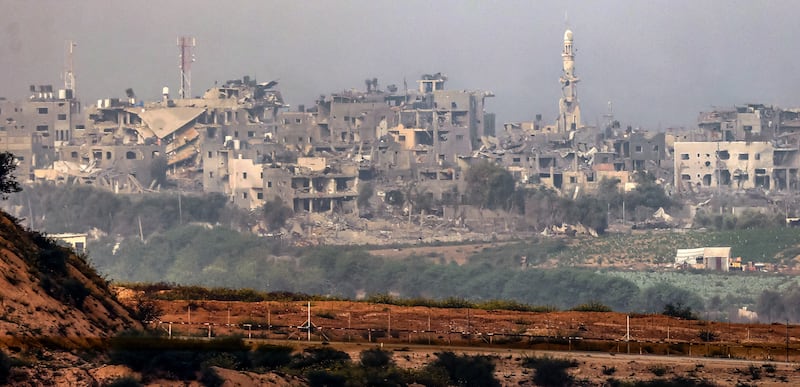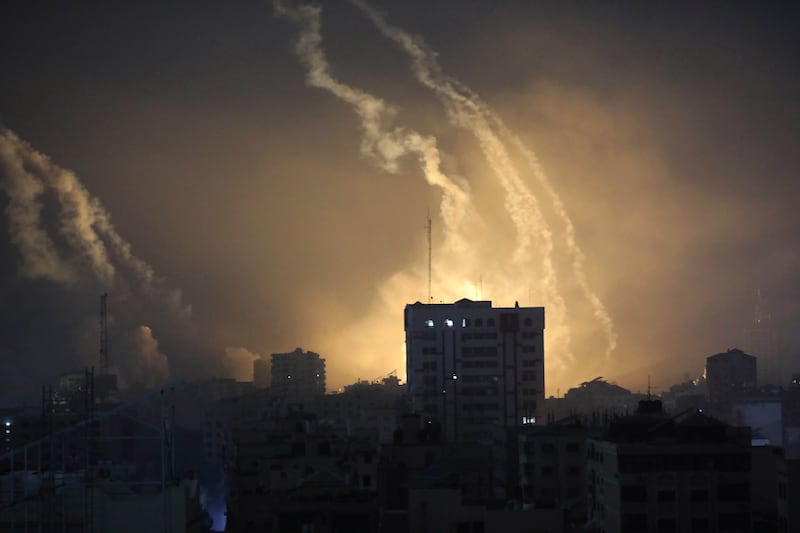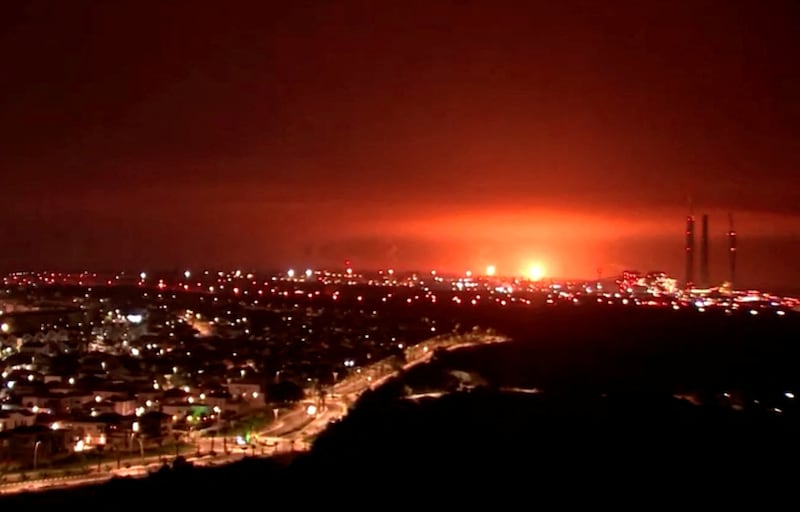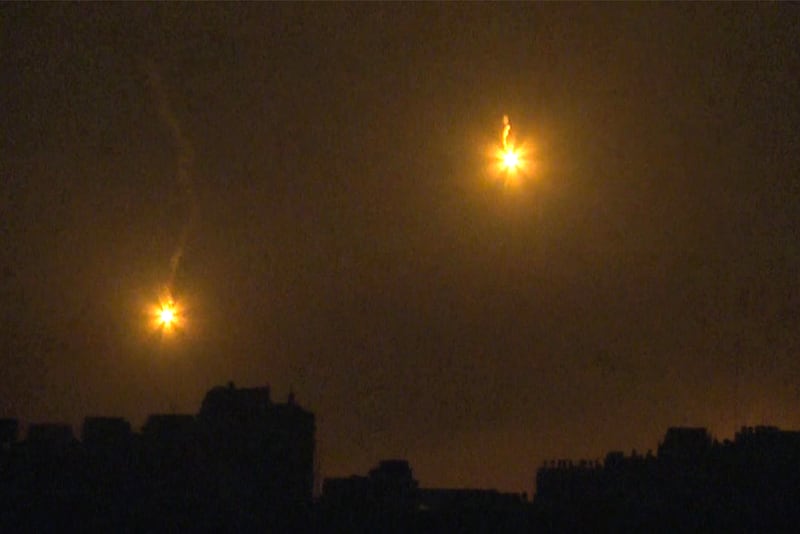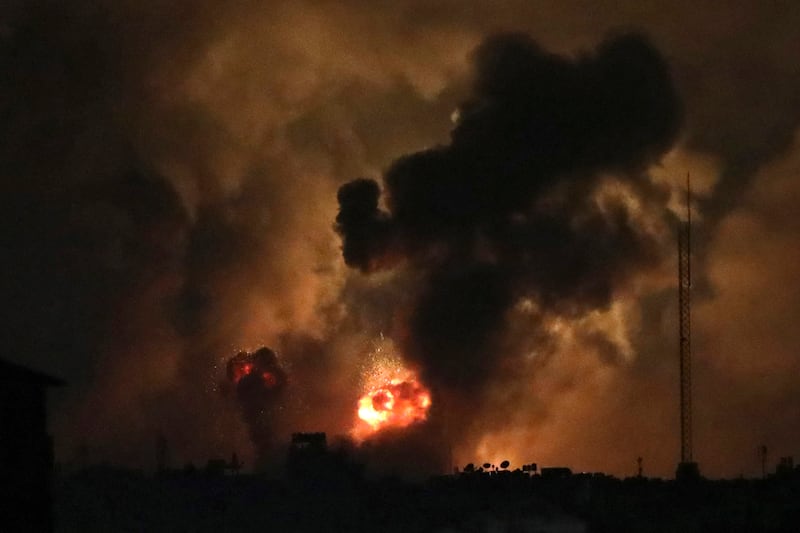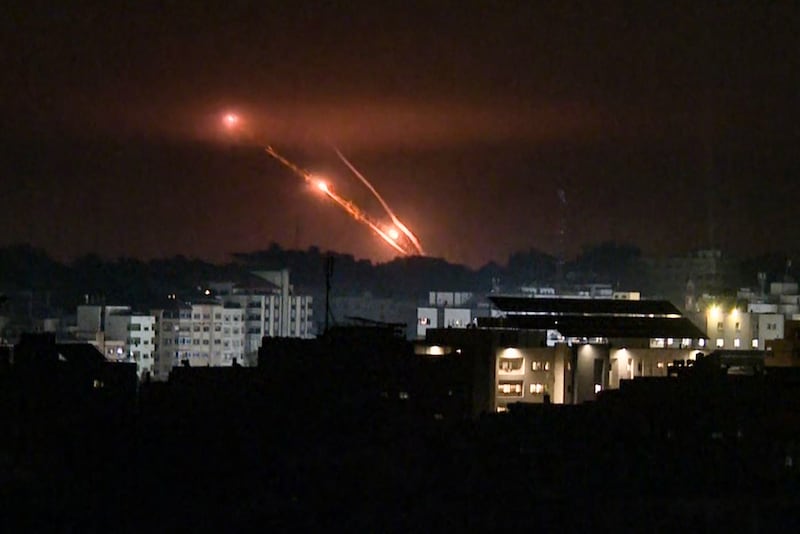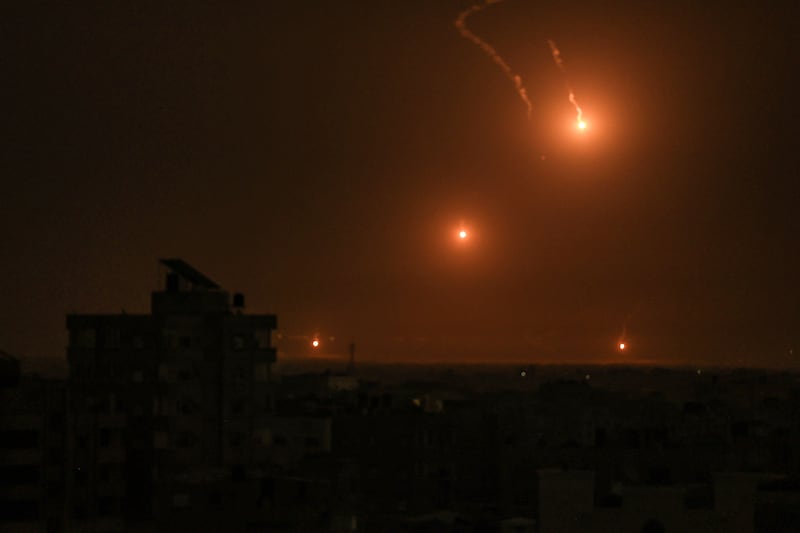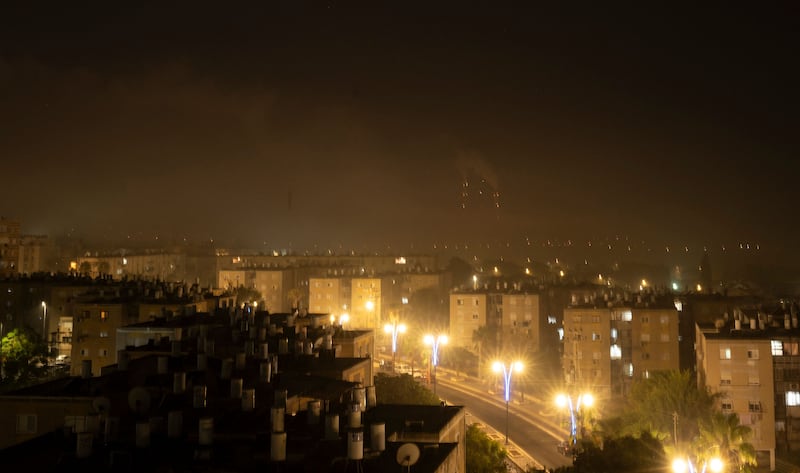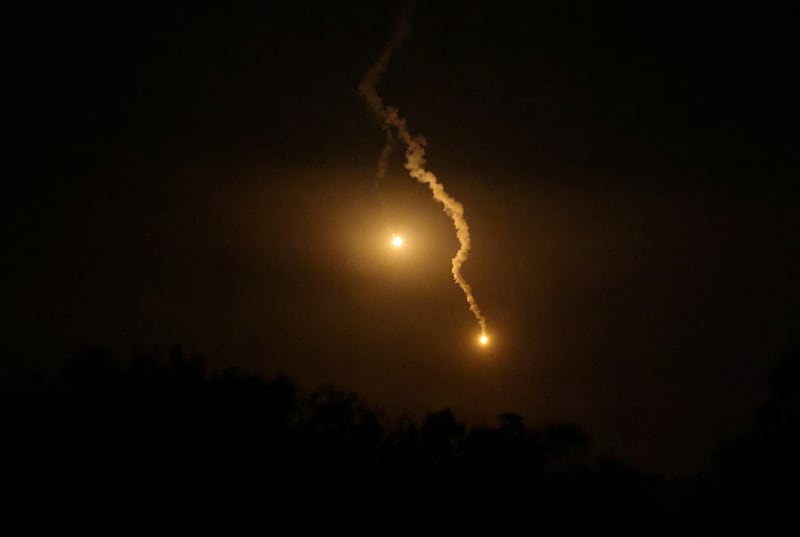Live updates: Follow the latest news on Israel-Gaza
Israel and Hamas fought on the streets of Gaza on Tuesday, with the conflict turning into urban warfare after more than three weeks of air strikes hammering the besieged enclave.
Gaza's interior ministry said Israeli forces are in the north-west of the city, while the Israeli military said its ground forces are “deep in the Gaza Strip” and have struck 300 Hamas targets, including their compounds inside underground tunnels.
Palestinian spokesman Iyad Al Bazm said Israeli tanks are currently in the Al Karama area and on the major Salah Al Din Street and are attempting to reach Al Rashid Street, all in the north-west, in a bid to “separate Gaza's north and south”.
Israel has been threatening Hamas with a “ground invasion” since October 7 while expanding its daily bombardment by land and air. On Saturday, it said it was expanding its ground operations with infantry and armoured corps after entering northern Gaza overnight.
Tuesday's street fighting marks the biggest ground escalation since the beginning of the war and comes after a constant bombardment campaign that has claimed the lives of more than 8,500 Palestinians and a tightened siege that has deprived its two million residents of water, fuel, and aid, a move condemned by the United Nations.
Al-Qassam Brigades, Hamas' military wing, said it targeted an Israeli tank penetrating east of the Al-Zaytoun neighbourhood with an Al-Yassin 105 shell, setting it on fire, and an Israeli bulldozer and a military vehicle after they entered a building where their men were based in Beit Hanoun.
The Palestinian faction also claimed a strike against Israel's Nevatim air force base with a missile barrage.
Meanwhile, the Israeli army said its forces have been fighting “deep in the Gaza Strip”.
“In recent hours, combined forces, led by ground forces, have been conducting fierce battles deep in the territory of the Gaza Strip … forces attacked a Hamas terrorist outpost in the north of the Gaza Strip,” the Israeli military said on X, formerly known as Twitter.
The Israeli army claimed that it attacked Hamas militants inside the vast tunnel network underneath Gaza without clarifying if the soldiers entered any of the tunnels.
In a statement it said that over the past day its combined combat forces “struck approximately 300 targets, including anti-tank missile and rocket launch posts below shafts, as well as military compounds inside underground tunnels belonging to the Hamas terrorist organisation”.
Militants responded with anti-tank missiles and machinegun fire, it added.
“The soldiers killed terrorists and directed air forces to real-time strikes on targets and terror infrastructure.”
The vast labyrinth of tunnels built beneath densely populated Gaza and used for smuggling and incursions into Israel by Hamas fighters, is considered the biggest security threat to the Israeli army.
Yocheved Lifshitz, an 85-year-old woman taken hostage by Hamas and released, had described being made to walk for “kilometres” through a “spider’s web of tunnels”.
During a press briefing on Tuesday, Israeli army spokesman Daniel Hagari said its forces had eliminated the commander of the Beit Lahia battalion in Hamas’ Northern Brigade who was responsible for October 7 attacks targeting Kibbutz Erez and Moshav Netiv Ha’Asarah.
“Our offensive operations will continue and intensify according to plan,” he said.
He said an aerial threat that was targeted at Eilat, in southern Israel, on Tuesday morning had been detected.

“There is no threat posed to the area. I repeat, there is no threat in this area, and there is no danger. We have a strong defensive posture in the southern area in all dimensions,” said Admiral Hagari.
Despite mounting global calls for a humanitarian pause, Israeli Prime Minister Benjamin Netanyahu said he will not agree to a ceasefire. The UAE mission to the UN on Monday called for an immediate ceasefire in the conflict.
“We need a ceasefire in the Gaza war now,” Lana Nusseibeh, ambassador and permanent representative of the UAE to the UN, told a Security Council meeting.
In Lebanon, where clashes between Israeli forces and Hezbollah-supported armed groups have been intensifying over recent weeks, the Israeli military spokesperson said its fighter jets had carried out overnight strikes and “destroyed infrastructure belonging to the Hezbollah terrorist organisation”.
The Israeli military “maintains a very high level of readiness, remains on high alert and is deployed both along the border and throughout the northern communities”, Admiral Hagari said.
240 hostages under Hamas custody
Israel has revised the number of hostages being held in Gaza to 240 – up from the previous figure of 230.
Admiral Hagari said the increase was due to further captives being identified. All 240 families have been notified, he added.
“Identification is complex. Some of the hostages are not Israeli citizens, and the process is complex,” he said.
He also said that the families of 315 Israeli soldiers killed in fighting since the Israel-Gaza war began have been notified of their deaths.
Ori Megidish, an Israeli soldier taken hostage by Hamas militants, was rescued during a ground raid in the Gaza Strip on Monday, according to a joint statement from the military and the Shin Bet intelligence service.


